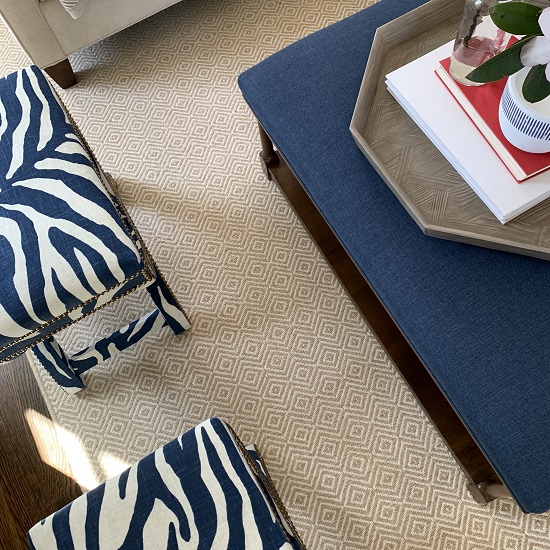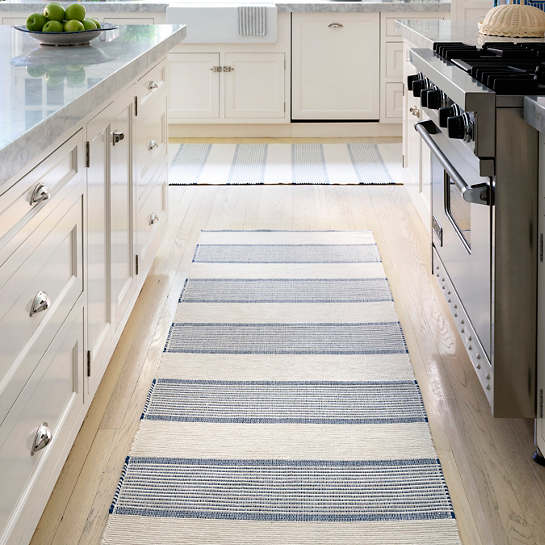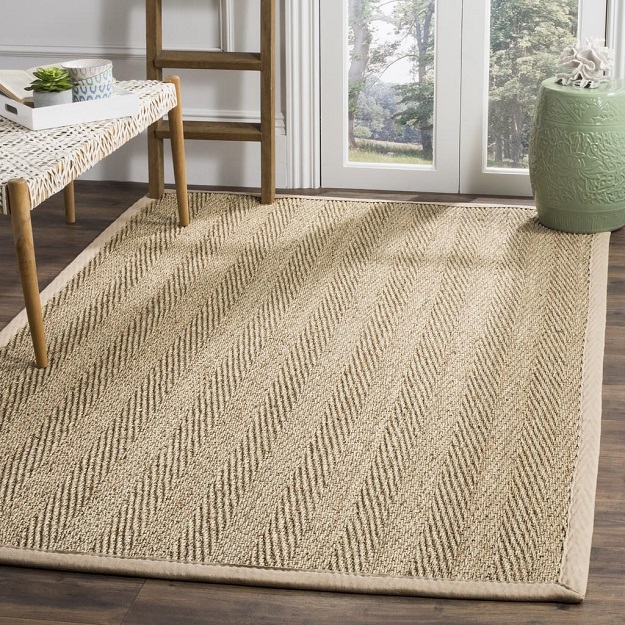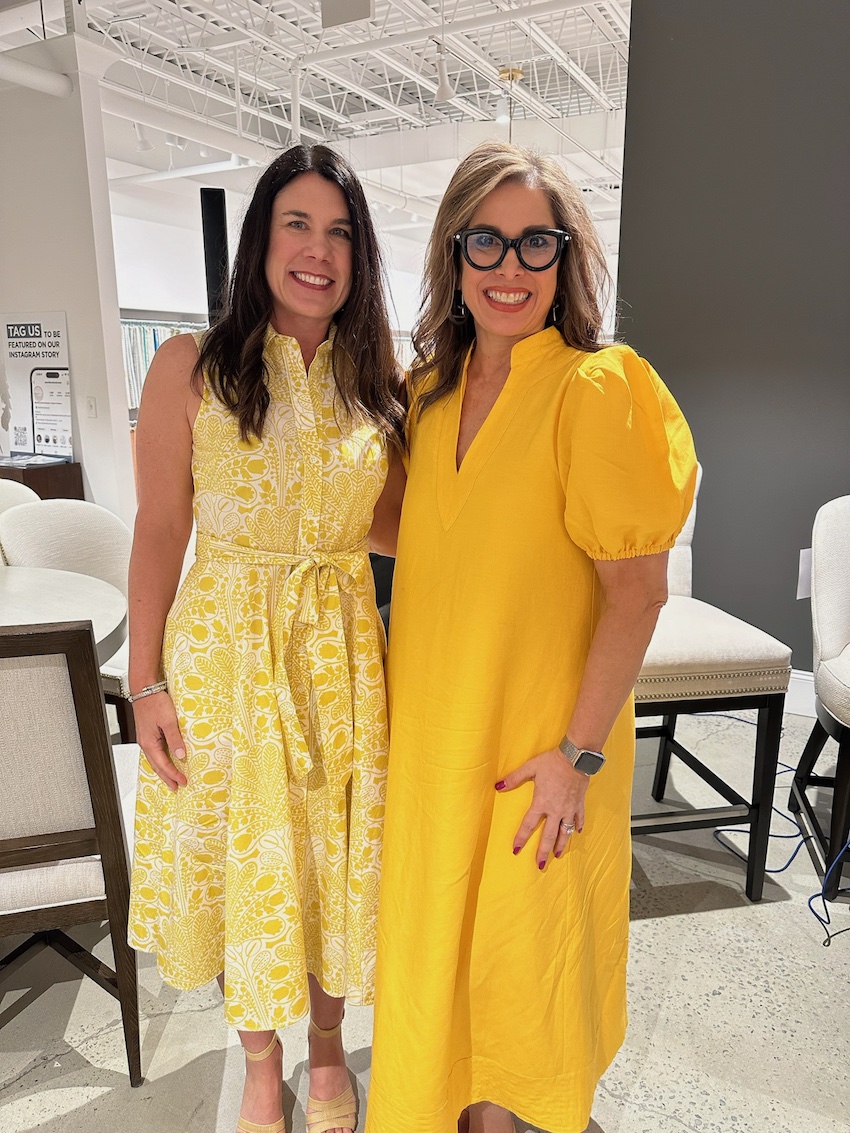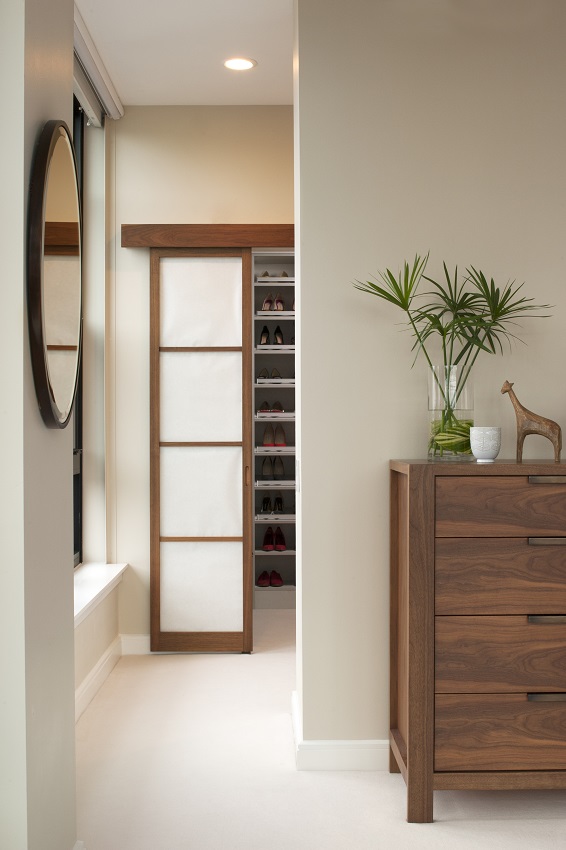
Design details: Natural rug materials
With so many options, selecting rugs can be a bit overwhelming. Texture, pattern, color, material – the offerings are endless. Today, we’re focusing on the differences between natural rug materials in order to help you decipher the language of rugs!
Natural rug materials
Obviously, rugs (both area rugs and broadloom, otherwise known as wall-to-wall) are not solely made of natural fibers. There is also a variety of man-made materials, especially in indoor/outdoor rugs. However, many of our clients opt for natural rug materials for their softness, luxe texture, and organic feel. They’re also sustainable, green, and renewable.
Silk
Just the word “silk” conjures up feelings of luxury, and if you’ve ever walked barefoot on a silk rug you know that it’s like a cloud. Not only is silk the strongest natural fiber, but it also has a beautiful luster that makes it perfect for detailed patterns. However, don’t let the strength fool you: spills and stains will need to be treated professionally. This requires special equipment, which means that they usually need to be taken out to be cleaned. Moreover, 100% silk rugs are pricey. We often recommend clients use a blend of wool and silk for both cost and ease of cleaning.
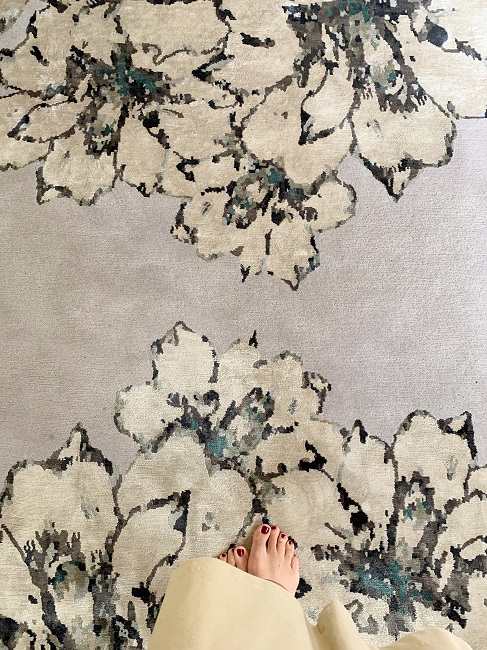
Wool and silk rug in an entry by Glenna Stone Interior Design
Wool
Wool’s strength and durability comes from its inherent protective qualities for sheep. The lanolin in wool makes it moisture-resistant, which in turn means stain-resistant. Spills can often be blotted up quickly with a towel. Did you know that wool is also naturally fire-retardant? Regular vacuuming will keep your wool rugs looking their best. The largest downside to wool is the price tag – it can be expensive, especially when it comes to covering a large surface area. However, I feel that the investment is worth it because you often spend the same amount in the long term when you have to replace rugs of lesser quality.
Cotton
Cotton is perfect for flatweave rugs, like kilims, and is more affordable than wool or silk. It’s breathable, easy to vacuum, and most spills can be removed if blotted quickly. Some cotton rugs are even machine washable! However, cotton doesn’t have the durability and longevity of silk or wool, so you may find yourself replacing it more frequently. It’s not recommended for high-traffic areas, but works well in spaces like kitchens as a runner because you can toss it in the washer if needed.
Jute, sisal, and seagrass
These are often grouped together because they’re made from plant fibers. All three have incredible durability and strength, with an organic feeling that often evokes beachy or coastal vibes. Their natural coloring adds a great neutral color, which works beautifully with a variety of styles from transtional to modern. Sisal has a more coarse texture than jute, and sometimes feels prickly – we don’t recommend it for barefoot areas, but it will hold up for years. Jute, on the other hand, feels more like fabric and softens over time. It’s better in medium-traffic areas, whereas sisal is great in busier spaces like stairs and entries. Seagrass grows underwater and feels very smooth, with a subtle sheen and fantastic durability. In my opinion, it’s the softest on the feet of this trio. Rugs made from these fibers require minimal maintenance – blot spills quickly and use either a vacuum without the beater brush or sweep with a broom – and will last for years.
Header image: Wool carpet in a Philadelphia bedroom by Glenna Stone Interior Design; Photo by Rebecca McAlpin
Want our weekly blog post delivered right to your inbox? Click here to sign up!
________________________________________
Glenna Stone Interior Design is an award-winning Philadelphia interior design firm serving Philadelphia, the Main Line, and surrounding cities. Utilizing her background and training in interior design, architecture, and engineering, Glenna specializes in creating interiors for residential and commercial design settings. We invite you to visit our website, view our portfolio, and catch up on the latest interior design concepts on our blog!

